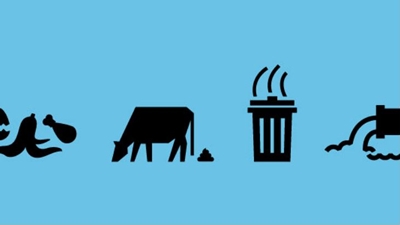ESG Drives Energy Firms to Pursue Renewable Natural Gas Projects
Date: January 13, 2021
Source: News Room

Energy firms are investing in renewable natural gas despite a dismal market for gas in general. As opposed to shale gas, renewable natural gas can be produced in commercial quantities at landfills, pig and dairy farms, wastewater-treatment facilities and from food waste and slaughterhouse sludge. Combusting it to generate electricity or heat produces no less carbon dioxide than shale gas. But doing so avoids the release of methane, a far more potent greenhouse gas than carbon dioxide.
According to recent sustainability reports, energy firms are looking for ways to enhance their Environmental, Social, and Corporate Governance (ESG) goals. Analysts and utilities believe renewable natural gas could reach 10 percent to 30 percent of total natural-gas supply by 2040. Currently, gas from landfills, farms, sewage plants, food waste and other anaerobic digestion systems constitutes less than 1 percent of the U.S. natural-gas supply.
Getting there will be no small task. Many current projects depend on subsidies and energy credits to be economically viable. Still more help will need to come from policymakers, energy industry's deep pockets, and the rising popularity of ESG oriented investment funds.
Landfill operators are already ahead of the curve. The U.S. EPA says there are already 565 operational projects generating 1,628 MW of energy from 324 million of cubic feet/day of gas. Still untapped are an additional 475 candidate landfills with the capacity to generate 898 MW of energy from 499 million cubic feet/day of gas.
Connecting agricultural sources to pipelines is too costly for most farmers but linking far-flung sources of gas to market is the day-to-day business of energy firms. Unlike operators of the electrical grid, pipeline owners do not have wind and solar power to tout to ESG investors or to deflect skepticism over pipelines' value in a green-energy economy.
Dominion Energy Inc., which is striving for carbon neutrality by 2050, plans to invest $2 billion in biogas projects. It has a $200 million pact to install them on dairy farms and is pursuing another $500 million in projects with Smithfield Foods Inc., the country's largest pork producer.
Sempra Energy's SoCalGas, the country's largest gas utility, is working with dairy farmers and says 20% of its gas will come from waste by 2030. Duke Energy Corp. says it has a five-year plan to be a leader in renewable natural gas. Chevron Corp. has committed more than $200 million to using renewable natural gas.
Sign up to receive our free Weekly News Bulletin